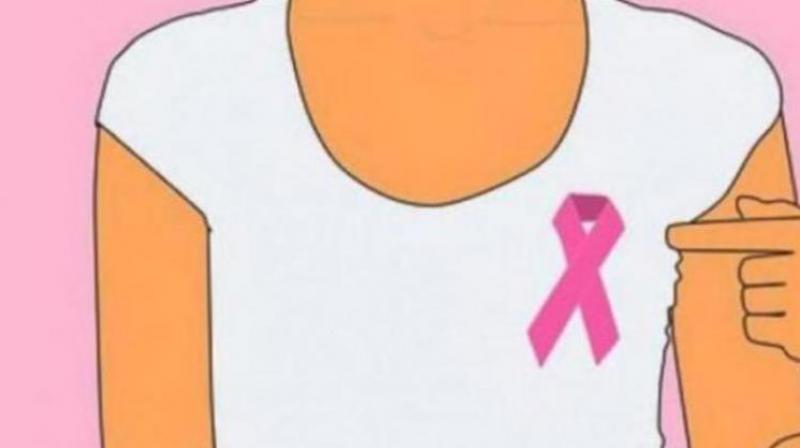Radiation therapy could reduce risk of breast cancer recurrence: Study

Washington DC: According to a recent study, a subset of patients with low-risk breast cancer is highly unlikely to see cancer return following breast conservation surgery but can lower that risk even further with radiation therapy. These 12-year follow-up data from the only prospective, randomized trial to compare recurrence outcomes after treatment for low-risk ductal carcinoma in situ (DCIS) were presented at the 60th Annual Meeting of the American Society for Radiation Oncology (ASTRO).
In this long-term update, patients with "good risk" DCIS defined by the research team as cancer found only on a mammogram or incidentally during a breast biopsy for another reason, continued to experience extremely low recurrence 12 years after breast conservation surgery.
Those who underwent whole breast radiation therapy (WBRT) and those who also opted to take tamoxifen experienced the lowest recurrence rates, but even those who received no further treatment following surgery did not experience any life-threatening consequences.
"I think the most surprising thing was that the recurrence rate in patients randomized to receive radiation therapy was so low. Radiation reduced recurrence by more than 70 per cent, and this was a much more profound impact than we expected," said lead researcher Beryl McCormick.
Since none of the tumours that recurred in either group appeared to pose a life-threatening risk, however, Dr. McCormick said it was reasonable for patients to determine, in consultation with their physician, whether continued treatment following surgery was something they wanted to do.
"Not all DCIS is the same, this type of cancer will not impact life expectancy. We found that radiation does significantly reduce the risk for recurrence, but you are starting with an extremely low recurrence rate even without radiation. Therefore, there should be a meaningful discussion between patient and doctor about whether additional treatment is something the patient wishes to pursue," said Dr. McCormick.
DCIS is a cancer of the cells that line the milk ducts of the breast. It accounts for roughly one-fourth of all new breast cancers for an estimated 60,000 cases diagnosed in the United States each year. Eligible tumours were 2.5 centimetres (cm) or smaller, with margins of three millimetres or less, and of low or intermediate nuclear grade.
The analysis included long-term follow-up data for 629 patients whose median age was 58 years, including 76 per cent post-menopausal women. Mean pathological tumour size was 0.60 centimetres (61 per cent 0.5 cm or smaller, 65 per cent with a margin width of 1.0 cm or larger or a completely negative re-excision specimen). The highest nuclear tumour grade was 1, found in 44 per cent of patients; grade-2 tumours were diagnosed in the remaining 56 per cent.
During the additional five years following surgery, noted Dr McCormick, "there was a slight creeping up of local recurrence rate." For those who received WBRT, the rate increased by just under 1 per cent, bringing it to nearly 3 per cent post-surgery.
For those who did not receive radiation, the recurrence rate increased by one percentage point each additional year of follow-up, climbing from just under 7 per cent to just under 12 per cent after 12 years. Neither age nor pathological tumour size was significant for predicting local recurrence or invasive local recurrence.

